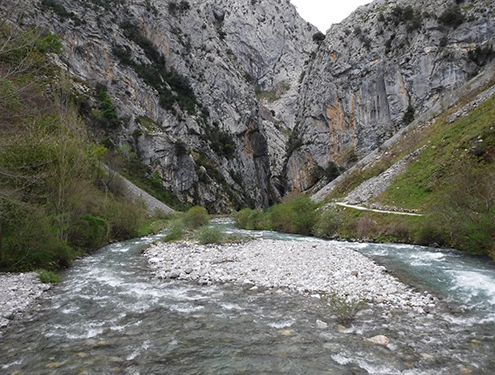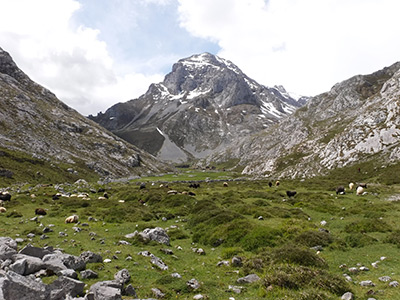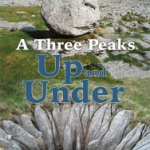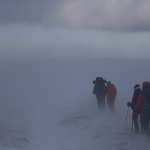Gold Assessed Expedition in the Picos de Europa 2016
I’m going to let you into a secret…the Picos de Europa is the most amazing mountain range in Europe. Forget the Alps, forget the Pyrenees, forget the Carpathians, and book a trip to the Picos de Europa. I first visited the Picos over 10 years ago. Travelling with a group of friends we wild camped, trekked through amazing forests of oak, pine and beech and generally marvelled at the limestone peaks. After that first short visit I have returned regularly on a mix of personal, university and DofE expeditions.
Situated on the north coast of Spain the Picos de Europa national park covers an area of 646 km2. The park is divided into three limestone massifs; eastern, central and western. The central massif contains the highest peak Torre de Cerredo 2650 m and is divided from the western massif by the Cares Gorge. If high limestone mountains and deep gorges are not enough to draw you to the Picos the flora and fauna is unlike anything we have in the UK. There are bears, wolves, wild boar, wild cats, vultures and a diversity and abundance of wild flowers that is mind blowing.
I had the pleasure of visiting the Picos twice in 2016 in May and in October. In late 2015 Bedford Modern School had asked Lupine Adventure to put together a Gold DofE expedition to the Picos. After meeting the group and supporting them in their route planning I headed out in May to check campsites, walk their planned route and complete the expedition specific risk assessment. I based myself at Camping La Viorna on the edge of the town of Potes. A great campsite with modern clean facilities, friendly staff and good cheap food and wine I would totally recommend this campsite as a base for a visit to the Picos.
In October I travelled down to Bedford and joined the students and staff travelling to the Picos. We drove down to Portsmouth early on Saturday morning and boarded the ferry to Santander. The ferry journey allowed lots of time getting to know the students and staff from Bedford and lots of relaxation time as well. We arrived in Santander on a Sunday morning and drove 100 km along the coast and up into the mountains and arrived at our campsite in Potes. In anticipation of the fact that supermarkets are generally closed on Sunday in Spain we had brought from Bedford Tesco food for our first evening meal. Utilising all our Trangias we cooked a feast of rice, mixed fresh vegetables, Quorn ‘chicken’ in Chinese style sauces. That’s the great thing about Trangias, you are not limited to boil in the bag style meals…you can actually cook proper food.
Monday was an acclimatisation day spent food shopping (Potes has amazing local cheese), discussing emergency procedures, acquainting the group with their Spot beacon and re-familiarising the group with the 1:40000 scale maps of the area. Over the subsequent four days from Tuesday to Friday the group from Bedford Modern worked hard and totally earned their Gold DofE awards.
Starting at Cosgaya the group trekked north-west along forest tracks and camped at Refuge El Redondo in Fuente De. From El Redondo (which is another campsite that I would totally recommend) they headed west over the mountains to Santa Marina de Valdeon. One of the things that most impressed me about this group was that at lunchtime they asked if it was ok to summit an adjacent peak before continuing on with their planned route. They worked out that it would take an additional hour to summit and return to their lunch spot. I approved this and supervised them as they summited Alto de la Triguera 1890 m. After a night wild camping on the edge of a forest the group headed north along the Rio Cares and down through the magnificent Cares gorge. Another night of wild camping followed before the group faced their final day and biggest uphill push. From the Cares gorge the headed north-west and up into Vega Maor where they stopped for lunch. Transhumance agriculture is still practiced in the Picos and Vega Maor is an upland pasture that is used for grazing cattle and goats during the summer months. From Vega Maor they continued west and finished their expedition at Lago de la Ercina.
After spending the Friday night at a campsite near Covadonga we drove to the beautiful coastal town of Sant Vincente de la Barquera. A nice walk on the beach and a seafood lunch followed before we drove back into Santander and caught the ferry back to the UK. Safely back in Bedford a team of happy but tired students were collected by parents and I had one last cup of coffee before heading back up the M1 to Leeds.
If you are wondering where to do a gold DofE in Europe, we think that the Picos de Europa wins hands down.
For more information on our European Gold DofE expeditions please visit our International DofE pages.
If you wish to buy maps of the Picos de Europa we would recommend going to Stanfords






